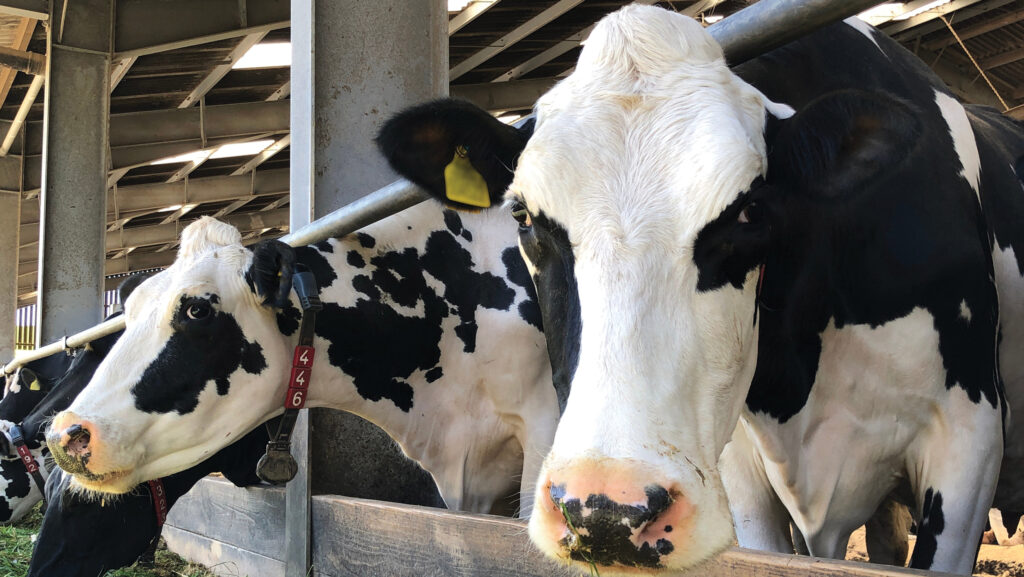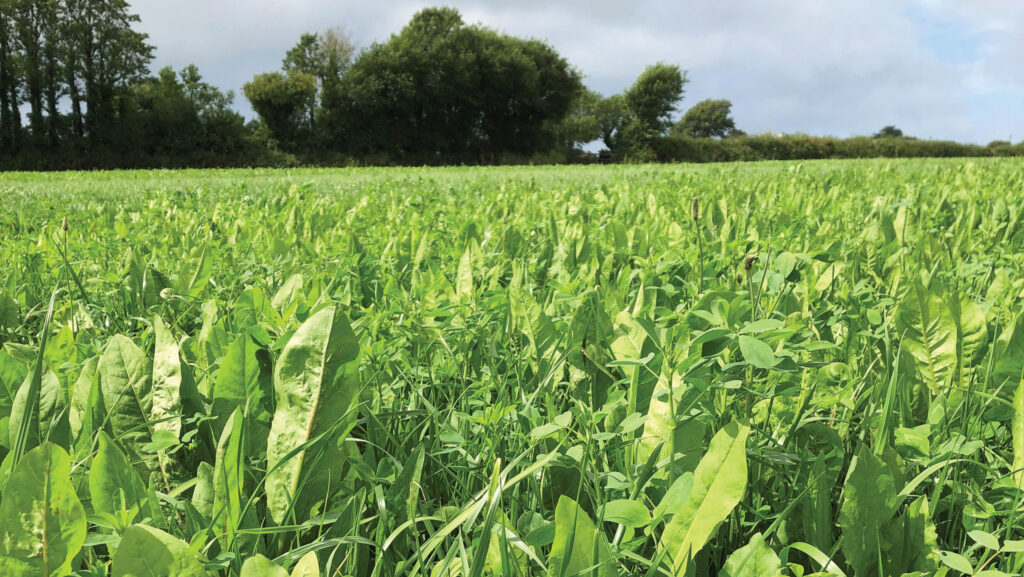How soil and crop can contribute to ruminant nutrition
 © Adobe Stock
© Adobe Stock Livestock farmers are advised to take a holistic approach to animal nutrition, accounting for soil, crop and stock when formulating diets to avoid mineral imbalances and optimise animal performance.
Independent ruminant nutritionist Peter Bone, at Livestock and Grassland Mineral Consultancy, says soil is where the foundation of nutrition begins.
“As an industry, we seem to be focusing on individual aspects of nutrition, not a holistic approach that factors in soils, crops and livestock,” he says.
See also: How to correctly supplement beef cattle with minerals
Quality-grown crops
Peter explains that all elements come from nature, so aiming to feed livestock their nutrition requirements through as many high-quality grown crops as possible is better than feeding supplements.
“It is important to realise mineral nutrition is all about balance – more does not mean better. For example, if you have a selenium deficiency, you cannot utilise iodine effectively as both are used in tandem.”
However, there is not a clear-cut relationship between minerals in soils, crops and animals, which can make diagnosing mineral imbalances challenging.
“When taking soil analysis, do not use these results as the sole source of understanding livestock mineral status,” says. “You could have plenty of cobalt showing up in the soil, but this may not be reflected in the stock.”
Similarly, if there is a deficiency in the crop, it does not necessarily mean there is a deficiency in the animal, and an approach that takes all three factors into account is therefore required.
Take a step back
To optimise animal nutrition, Peter recommends taking a step back and asking what exactly is in the livestock diet.
“Think about everything that’s going into the animal – food, water and mineral supplements. You want to know exactly what it’s eating, its nutrition source, the amounts and the timeline.
“You need to consider forage and dry matter intake. Ask yourself, are you feeding cake, blend, straights, minerals, drenches, injections, blocks, boluses and so on. Are you adding minerals to forages or drinking water?”
Checking the farm’s water supply (particularly when from a borehole) is crucial. Mineral analysis should be carried out at least once a year to address potential imbalances, which could otherwise harm livestock performance, says Peter. “You shouldn’t have to think twice about drinking livestock water yourself – quality is key.”
A forage mineral report, to provide good technical analysis of feedstuff, is essential and acts as a useful first tool to address mineral imbalances. From this, a ration that integrates concentrate products or mineral supplements can be built to counteract imbalances in the soil and forage.
Peter recommends using single elements where possible to target specific deficiencies and avoid the oversupply of other minerals, which can be costly and, in the worst-case scenario, lead to toxicity issues in livestock.
Diagnosis
When diagnosing mineral imbalances, it is important to discuss clinical symptoms with the vet and invest in a testing strategy.
Testing samples can be useful to confirm inputs and animal health status. A urine sample is a relatively cost-effective and underutilised method of identifying excessive macro-minerals in diets.
Blood samples or a liver test carried out by a vet to assess if animals are deficient in certain nutrients can also be useful.
This can be either a live liver biopsy taken from adult sheep or cattle, or a liver sample taken from cull cows, cull sheep or lambs at point of kill.
“If deficiencies are diagnosed, supplementing with products that have data to back up claims is good practice,” he says. “Then you can bring all the diet information together to make informed decisions and closely monitor animal performance.”
What mineral deficiencies can we avoid with herbal leys?

© Hannah Jones
Herbal leys are becoming a popular option for livestock farmers as the latest Sustainable Farming Incentive (SFI) 2024 extended offer pays £382/ha for establishing a mixture of grasses, legumes and herbs.
The CSAM3 option (which must include a minimum of one grass species, two legume species and two herb or wildflower species) aims to improve soil health by varying root structures in the sward.
But incorporating diverse species leys into the diet can also provide a host of health benefits to livestock. Hannah Jones, soils adviser at the Farm Carbon Toolkit, explains how different plant species provide different benefits to livestock.
“Herbal leys support good mineral balance and provide complementary anthelmintics to pharmaceutical wormers,” she says. “Herbs can provide a considerable mineral buffer, as different root types draw up a range of minerals from deeper down the soil profile, making this available to livestock.”
This, in turn, may require diet formulation retweaks because specific herbs are higher in certain minerals than others, providing an opportunity to cut back on mineral supplementation, she adds.
A recent project, the Toolbox of Multispecies Sward, compared the impact of herbal leys with ryegrass and white clover swards across trial farms in the South West of England. The project was carried out by Duchy College and funded by Agritech Cornwall and the Isles of Scilly via the European Regional Development Fund.
Sulphur, boron and calcium were found to be higher in the herbal leys compared with ryegrass and white clover. Nitrogen levels were higher in the grass clover ley than the herbal leys, but there was no difference in yield, crude protein and metabolisable energy across the trial farms. Digestibility was higher in herbal leys later in the season.
“Burnet, chicory and plantain were significantly higher in calcium. There were hints that yarrow may be an accumulator of iodine, but more data is needed on this,” says Hannah.
“Chicory and yarrow were found to be higher in copper. Therefore, if your soils have adequate copper levels but there is deficiency in your bulk forage samples, and/or your animals have a suspected deficiency, it could be an idea to include chicory in your leys.”
Species choice
Hannah says yarrow can be good to include for its drought tolerance and support of herd and flock health. Selfheal could be useful in open swards, whereas in freer-draining soils, burnet could be an option.
White clover is an easy choice for improving crude protein content of a ration and increasing soil nitrogen supply, but in dry, free-draining soils, lucerne and sainfoin are also beneficial.
For silage leys, red clover and alsike clover are useful. Birds-foot trefoil can be a valuable addition in leys down for more than three years.
It is worth noting that because of the powerful mineral effect of herbal leys, diet formulations may need tweaking to ensure minerals are fed in balance, Hannah warns.
For instance, AHDB research shows that many dairy herds are feeding an excess of copper, and where chicory and yarrow are included in herbal leys, farmers are advised to seek nutritional advice.
However, she notes that the diverse plants in herbal m♦ixes cannot replace minerals that are not within the soil profile in the first place.
Mineral composition of five common herbs |
|||||
|
Burnet |
Chicory |
Plantain |
Selfheal |
Yarrow |
|
|
Calcium |
♦ |
♦ |
♦ |
||
|
Copper |
♦ |
♦ |
|||
|
Iron |
♦ |
||||
|
Magnesium |
♦ |
||||
|
Manganese |
♦ |
♦ |
♦ |
||
|
Nitrogen |
♦ |
♦ |
|||
|
Potassium |
♦ |
♦ |
|||
|
Sodium |
♦ |
||||
|
Sulphur |
♦ |
|
|||
|
Zinc |
|
♦ |
♦ |
||
|
Source: Toolbox of Multispecies Sward, Note: Herb species from mid-season time point were taken. Species with significant (P< 0.05%) higher levels of mineral in the dry matter are indicated in the table. |
|||||
Peter Bone and Hannah Jones were speaking at a recent AHDB on-farm meeting in Devon
